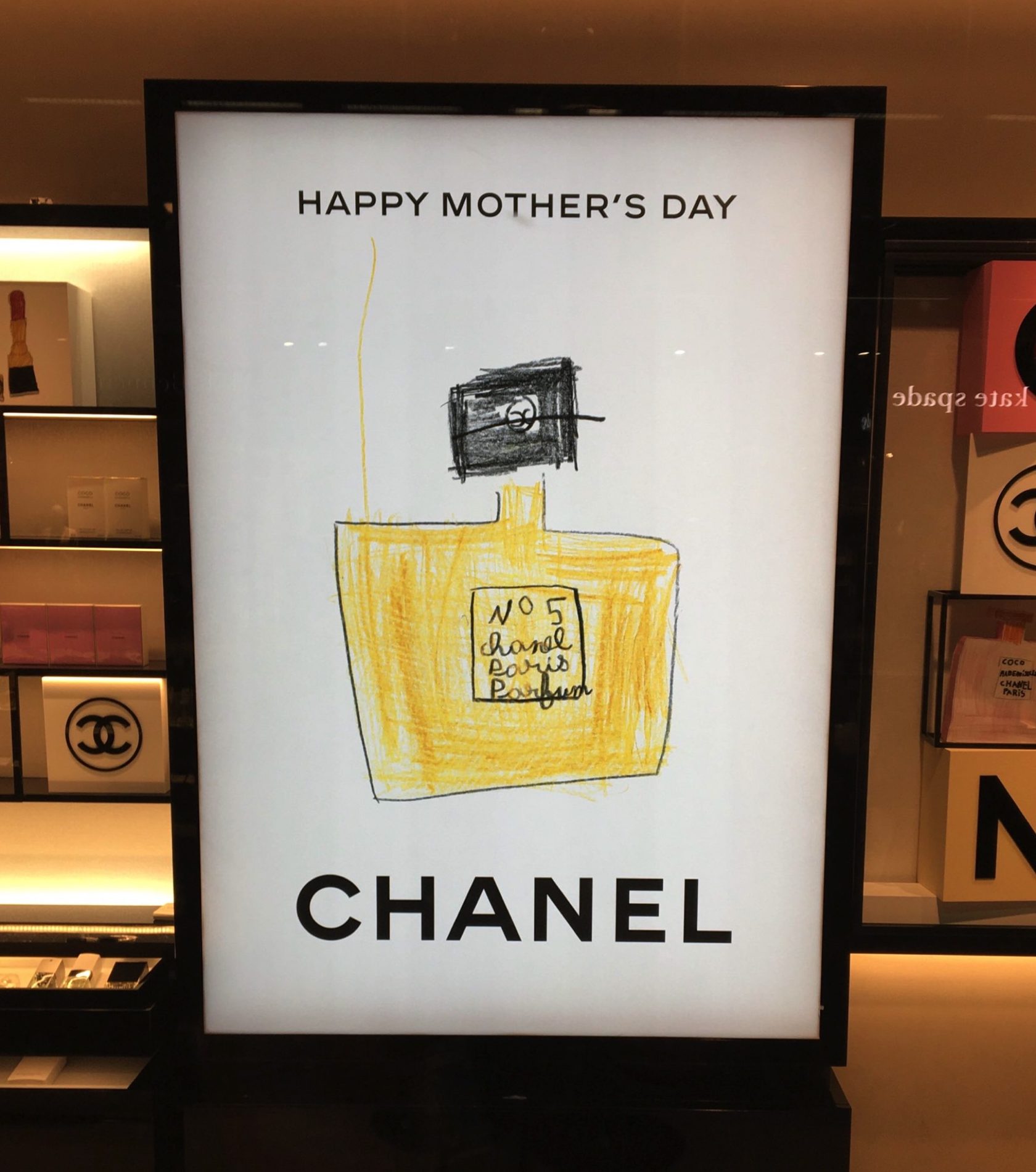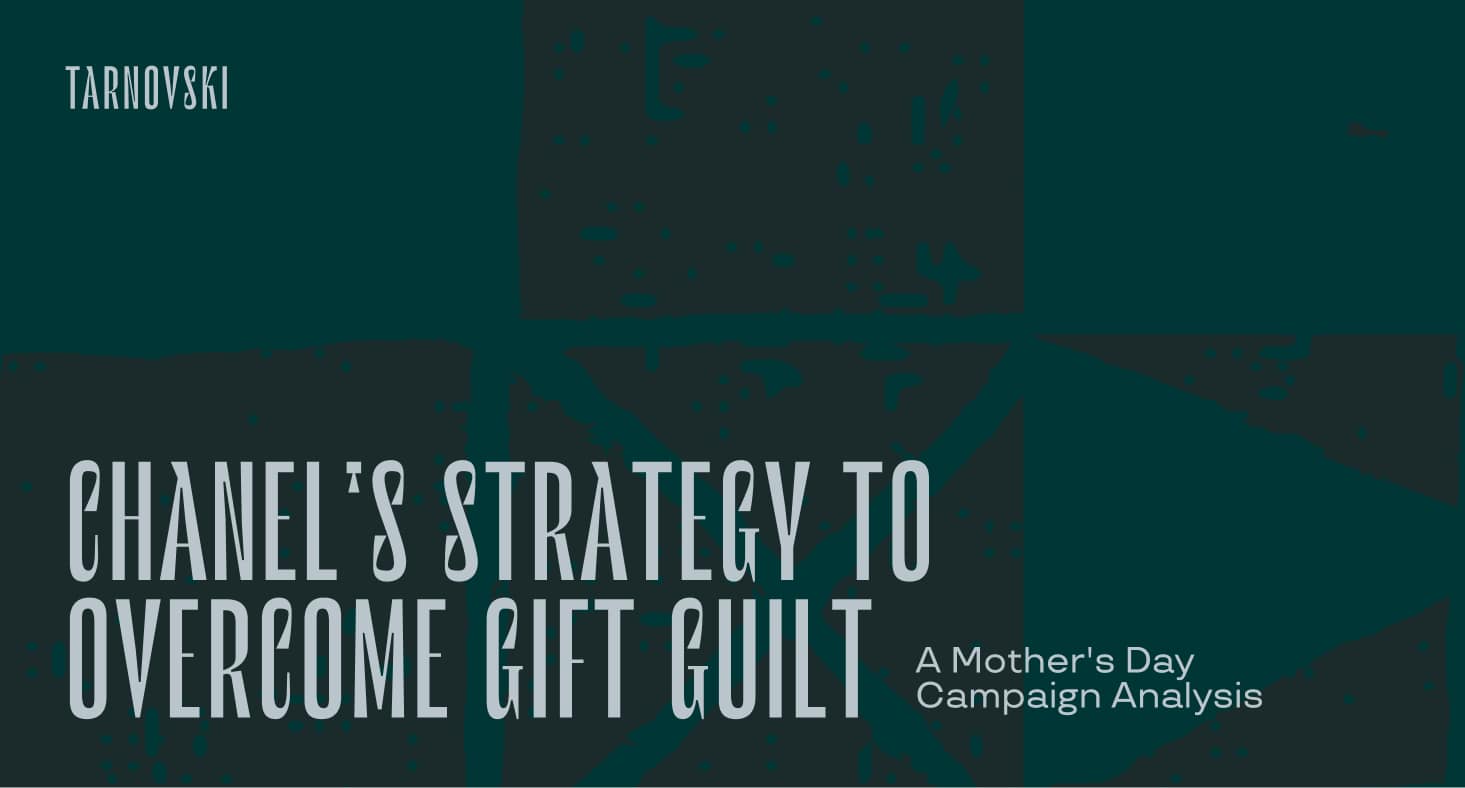How Chanel used our mothers' gift guilt and childish illustrations to increase their sales
Luxury products have a dual purpose. Unlike most goods, luxury products are often used as gifts. In this context, they become much more than objects that supply an obvious functional need. They can also have the role of confirming a certain status to the giver, but especially to the receiver. Luxury gifts play the role of showing the one who receives the gift that is appreciated, has importance and awakens certain piety in the other.
Most of the messages that companies send to buyers and consumers work to reduce the buyer's resistance to the offer, i.e. to review their attitude towards some parameters of the brand or product (hello, De Beers). They're also working with the final consumer - to make him want his product more (De Beers, again, why not?). But what I find most interesting about this year's Chanel's Mother's Day campaign is a subtle thing - working with the mother's potential resistance to the gift.
This may not be the first thing we think about, but mothers (and not just them) can develop resistance to gifts. The "gift" involves two stages: the act of giving and the act of receiving it. The receiver of the gift is an equally important participant in the larger transaction (starting from the purchasing of the gift, first of all), therefore, he or she must be satisfied, if the company hopes for repeated purchases. And this where we add to this formula an important psychological factor that can influence the repetition of the transaction: the phenomenon of "gift guilt". We're talking about the psychological discomfort of receiving a gift, most often translated as "I didn't deserve", "I don't want to be in debt" and "you need this more than I do".
When it comes to luxury gifts, parents often react like this: "I can't accept this gift because I know you need this money to [...]." At least that's what they say. From this insight, the Chanel brand solution appears to "fight" with the potential sense of guilt of the end consumer. They notice the potential inner discomfort of mothers - on the one hand, they like the gift and feel honoured, and on the other, they feel guilty (see above how), knowing that Chanel is a luxury product.
This is when the meaning of the "children's drawings" and their role in this campaign becomes clear. This is a way for Chanel to remind mothers of the joy they experienced by receiving the first drawings of their children as their gift. An innocent gesture, full of positive emotions - no reason for guilt. This comparison, at the same time, makes them associate the gifts of "those beautiful, innocent times" (which lacked any subtext or price), with the gift they now receive (expensive, luxurious).
So, instead of thinking about the "exaggerated" price paid by the child, this perception will be replaced by the association "Chanel = gift from my child", which gives them a sense of entitlement. And this is another big step that takes the consumer away from the "gift guilt" and the resistance we were talking about earlier.
By using this creative brand communication strategy, Chanel successfully reframes the potential negative emotions surrounding the price of the gift and strengthens their brand associations with positive feelings of love and appreciation.
Most of the messages that companies send to buyers and consumers work to reduce the buyer's resistance to the offer, i.e. to review their attitude towards some parameters of the brand or product (hello, De Beers). They're also working with the final consumer - to make him want his product more (De Beers, again, why not?). But what I find most interesting about this year's Chanel's Mother's Day campaign is a subtle thing - working with the mother's potential resistance to the gift.
This may not be the first thing we think about, but mothers (and not just them) can develop resistance to gifts. The "gift" involves two stages: the act of giving and the act of receiving it. The receiver of the gift is an equally important participant in the larger transaction (starting from the purchasing of the gift, first of all), therefore, he or she must be satisfied, if the company hopes for repeated purchases. And this where we add to this formula an important psychological factor that can influence the repetition of the transaction: the phenomenon of "gift guilt". We're talking about the psychological discomfort of receiving a gift, most often translated as "I didn't deserve", "I don't want to be in debt" and "you need this more than I do".
When it comes to luxury gifts, parents often react like this: "I can't accept this gift because I know you need this money to [...]." At least that's what they say. From this insight, the Chanel brand solution appears to "fight" with the potential sense of guilt of the end consumer. They notice the potential inner discomfort of mothers - on the one hand, they like the gift and feel honoured, and on the other, they feel guilty (see above how), knowing that Chanel is a luxury product.
This is when the meaning of the "children's drawings" and their role in this campaign becomes clear. This is a way for Chanel to remind mothers of the joy they experienced by receiving the first drawings of their children as their gift. An innocent gesture, full of positive emotions - no reason for guilt. This comparison, at the same time, makes them associate the gifts of "those beautiful, innocent times" (which lacked any subtext or price), with the gift they now receive (expensive, luxurious).
So, instead of thinking about the "exaggerated" price paid by the child, this perception will be replaced by the association "Chanel = gift from my child", which gives them a sense of entitlement. And this is another big step that takes the consumer away from the "gift guilt" and the resistance we were talking about earlier.
By using this creative brand communication strategy, Chanel successfully reframes the potential negative emotions surrounding the price of the gift and strengthens their brand associations with positive feelings of love and appreciation.

And for the reference, here is the history of how diamonds became diamonds thanks to the De Beers brand: https://nyti.ms/2z1NT0L.



